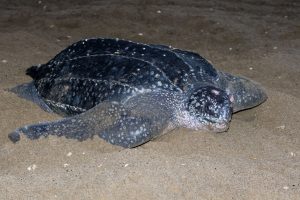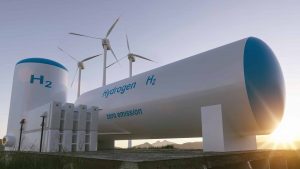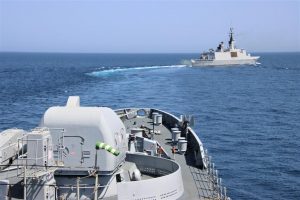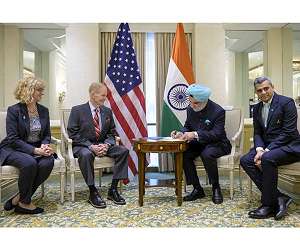Today’s Current Affairs: 3rd Jul 2023 for UPSC IAS exams, State PSC exams, SSC CGL, State SSC, RRB, Railways, Banking Exam & IBPS, etc
Table of Contents
Shift In Snowfall To Rainfall : Study

According to a recent study, the Himalayas Mountains and other mountains across the Northern Hemisphere are likely to see 15 per cent more rain for every 1-degree Celsius rise.
Key Findings of the report:-
- Climate change could cause a shift in snowfall to rainfall in mountain regions across the Northern Hemisphere, amplifying rainfall extremes lasting over a few hours to a day.
- For 2 degrees and 3 degrees rise, the world would see a 30 per cent and 45 per cent increase in rain,
- This switch from snowfall to rainfall could increase the risk of disasters such as floods, landslides, and soil erosion.
- Not all mountain regions are at high risk.
- The Himalayas and the North American Pacific Mountain ranges, including the Cascades, Sierra Nevada, and coastal ranges from Canada to Southern California are more threatened than the Rockies or the Alps.
Debrigarh : Completely Free From Any Human Settlement

Debrigarh, a wildlife sanctuary in Odisha’s Bargarh district, has been made completely free from any human settlement. As per the State Forest and Environment department, Debrigarh Sanctuary, which is proposed to be a tiger reserve, has high prey base.
- The sanctuary is habitat of animals such as Indian Bison’s, Wild Boars, Sambhar and Peacocks.
- The four-horned antelope (Chousingha) which is listed as vulnerable in IUCN red list also inhabits this sanctuary.
- The Hirakud Reservoir, which is a Ramsar Site and International Bird Area, is also located next to the sanctuary.
- The sanctuary also finds a special mention because of noted freedom fighter Veer Surendra Sai who made his base at ‘Barapathara’ located within the sanctuary during his rebellion against the British.
Leatherback Sea Turtle: Seen In Visakhapatnam

In a rare occurrence, a leatherback sea turtle was seen after a gap of seven years in Visakhapatnam.
- Leatherback Sea turtle is the largest turtle in the world.
- It is the only species of sea turtle that lack scales and a hard shell.
- They are named for their tough rubbery skin and have existed in their current form since the age of the dinosaurs.
- These turtles are highly migratory which can swim over 10,000 miles a year between nesting and foraging grounds.
- They are also accomplished divers with the deepest recorded dive reaching nearly 4,000 feet deeper than most marine mammals.
- It has a unique thermoregulatory adaptation allows them to maintain core body temperatures at extremely cold depths.
- It is found in every ocean except the Arctic and Antarctic.They have the widest global distribution of any reptile, with nesting mainly on tropical or subtropical beaches.
- Conservation status
- IUCN: Endangered
- CITES: Appendix I
SIGHT Programme:

The union Ministry of New and Renewable Energy (MNRE) has issued scheme guidelines for implementation of strategic interventions for green hydrogen transition (SIGHT) programme.
- SIGHT programme is a sub component under the National Green Hydrogen Mission.
- It aims at providing electrolyser manufacturing incentives with a total outlay of INR 4440 crore
- It focuses on green hydrogen production with financial outlay of INR 13050 crore.
- The Solar Energy Corporation of India (SECI) would be the implementing agency responsible for the scheme’s execution.
- National Green Hydrogen Mission was launched in 2022, with the goal of making India energy independent and decarbonising major sectors of the economy.
- India’s Green Hydrogen production capacity is likely to reach at least 5 MMT per annum, with an associated renewable energy capacity addition of about 125 GW.
- The targets by 2030 are likely to bring in over Rs. 8 lakh crore investments.
- Nearly 50 MMT per annum of CO2 emissions are expected to be averted by 2030.
INS Shankush:

The Ministry of Defence has signed a contract for Medium Refit with Life Certification (MRLC) Submarine “INS Shankush” with Mazagon Dock Shipbuilders Limited (MDL), Mumbai at an overall cost of Rs. 2725 Cr.
- INS Shankush belongs to Shishumar class of submarines and has a speed of 22 knots.
- It is a Sub-Surface Killer (SSK) Class diesel-electric submarine.
- These submarines are developed by the German yard Howaldtswerke-Deutsche Werft (HDW).
- The first two of these vessels (INS Shishumar and Shankush) were built by HDW at Kiel, while the remainder (Shalki and Shankul ) have been built at Mazagon Dock Limited (MDL) Mumbai.
- The ships were commissioned between 1986 and 1994.
- These submarines have a displacement capacity of 1660 tons when surfaced.
- Submarines are any naval vessel that is capable of propelling itself beneath the water as well as on the water’s surface.
- This is a unique capability among warships, and submarines are quite different in design and appearance from surface ships.
Belle Robot:

Researchers in Switzerland recently developed a new, autonomous fish robot named Belle, capable of giving conservationists a clearer picture of the organisms that live under the sea without disturbing the marine environment.
- Belle Robot is an autonomous underwater robot designed to collect DNA samples and film underwater without disrupting the delicate ecosystem it explores.
- Objective is by analysing DNA samples and video footage collected by the robot, researchers aim to better understand the impact of human activities on marine life and develop targeted conservation strategies.
- Belle is silent, moves like a fish and doesn’t create a disruptive wake as she moves through her environment.
- It employs artificial intelligence (AI) to autonomously manoeuvre and capture isolated e-DNA samples, as well as high-resolution video footage.
- Measuring just under a metre and weighing almost 10 kg out of the water, Belle is propelled by a silicone fin with two cavities into which water is pumped in cycles.
- These cavities are filled and emptied with water through a pump system that moves the fin back and forth.
- Its soft tail mimics the rising and falling motion of a fish, creating no disturbance or turbulence in the water, allowing it to blend effortlessly with other marine creatures.
United Nations Global Compact:

Nord Security, home to NordVPN, NordLayer, NordPass, and NordLocker, recently joined the United Nations Global Compact (UNGC) community.
- United Nations Global Compact (UNGC) is a call to companies everywhere to align their operations and strategies with Ten Principles in the areas of human rights, labour, environment and anti-corruption.
- Launched in 2000, UNGC is the largest corporate sustainability initiative in the world, with more than 15,000 companies and 3,000 non-business signatories based in over 160 countries, and more than 70 Local Networks.
- This UN-led initiative promotes activities that contribute to sustainable development goals to create a better world.
- The Ten Principles of the UN Global Compact derived from core United Nations conventions and declarations, the Ten Principles of the UN Global Compact are recognized and endorsed in numerous intergovernmental resolutions and outcome documents, including General Assembly resolutions.
- Companies that join the compact are expected to integrate these principles into their corporate strategies, culture, and day-to-day operations.
- Companies are also expected to advocate the principles publicly and communicate with stakeholders on progress toward meeting the principles.
- Any company that commits to upholding the principles may join the compact, which is not legally binding and is purely voluntary.
Industrial Park Rating System:

Department for Promotion of Industry and Internal Trade (DPIIT) successfully organized the National Workshop on Industrial Park Rating System in New Delhi.
- Industrial Park Rating System was launched by DPIIT in 2018 with the support of the Asian Development Bank (ADB) and the Ministry of Electronics and Information Technology (MeitY).
- Industrial Park Rating System (IPRS) is an extension of the India Industrial Land Bank (IILB) platform which features more than 4,500 industrial parks.
- It is a GIS-enabled database to facilitate investors to identify their preferred location for investment.
- Aim is to rate the country’s industrial parks and special economic zones (SEZ).
- It rates industrial parks across four pillars: internal infrastructure and utilities, external infrastructure and facilities, business support services, and environmental and safety management
- Industrial Parks and Special Economic Zones (SEZS) are classified into 3 categories: Leaders, Challengers and Aspirants.
- This particular portal is integrated with the industry-based GIS system of the states and Union territories and plot-wise information in these are updated on a real-time basis.
- Industrial Park Rating System Report 2.0 is based on the findings of the pilot and review of the global approaches, frameworks, and guidelines DPIIT introduced ‘IPRS 2.0’ in Oct, 2021 as a key enabler for identifying additional measures to enhance industrial competitiveness.
- The Globally known frameworks were referred for developing the initial concept of IPRS 2.0 viz. the International Guidelines for Industrial Park (IGIP) developed by United Nations Industrial Development Organization (UNIDO) and the Eco-Industrial Park (EIP) framework developed by UNIDO, World Bank.
India-France Maritime Partnership Exercise:

Indian Naval ships INS Rana and INS Sumedha undertook a Maritime Partnership Exercise with French Navy ship FS Surcouf in the Bay of Bengal on 30th June 2023.
India-France Maritime Partnership Exercise:
- INS Rana, a guided missile destroyer and INS Sumedha, an indigenously built offshore patrol vessel were from the Indian Navy side.
- The French Navy’s La Fayette class frigate Surcouf participated in a variety of activities with Indian Navy ships.
- The Exercise included tactical manoeuvres, replenishment at sea approaches, air defence against fighter aircraft and cross deck helicopter operations.
- Location: Bay of Bengal.
- The Partnership Exercise signifies the strong navy-to-navy links, interoperability and strong bonds between Indian Navy and French Navy.
Nano Urea Plants To Be Set Up Across The Country By 2025:

The Chemical and Fertilizer Minister said Nine Nano Urea plants to be set up across the country by 2025
- The ministry is aiming to manufacture 44 crore bottles of Nano Urea by the year 2025.
- To achieve the target nine plants will be set up across the country.
- Nano Urea is a nanotechnology-based revolutionary Agri-input that provides nitrogen to plants.
- It is developed and patented by the Indian Farmers Fertiliser Cooperative Limited (IFFCO).
- IFFCO Nano Urea is the only nano fertilizer approved by the Government of India and included in the Fertilizer Control Order (FCO).
- Compared to conventional urea prill, Nano Urea has a desirable particle size of about 20-50 nm and more surface area (10,000 times over 1 mm urea prill) and number of particles (55,000 nitrogen particles over 1 mm urea prill).
- It contains 4.0 % total nitrogen (w/v).
- The urea absorption rate by crops is 80 percent in the case of Nano Urea whereas the traditional urea absorption rate is only 30 percent.
- Nano Urea is cost-effective and demonstrated an increase in crop yield.
- It is produced by an energy-efficient, environment-friendly production process with less carbon footprints.
- It is also easy to store than urea bags.
27th Signatory To The Artemis Accords : India

India became the 27th signatory to the Artemis Accords, a set of non-binding guidelines that underpin the Artemis programme, a U.S.-led project to return humans to the moon permanently.
- Artemis Accord named after the Greek Moon goddess, represents a comprehensive agreement drawn up by the US to bring together nations that share a common vision for civil space exploration.
- It serves as a framework for cooperation and collaboration in space exploration, building upon the foundation of the Outer Space Treaty of 1967.
- The Artemis Accords were jointly launched by the United States Department of State and NASA on October 13, 2020, with seven partner countries, such as Canada, Italy, Japan, Luxembourg, UAE, and the UK.
- The Accords have been signed by 26 countries as of June 23, including the original eight.
- These include traditional US allies like Japan, Australia, the UK, France, and Canada, but also countries with relatively less developed space programmes like Colombia, Rwanda, Nigeria, and Mexico.
- The Artemis programme includes plans for a base on the lunar surface, multiple spacecraft to ferry humans and cargo, an orbiting space station, and a constellation of satellites to help with navigation and communication.
- The first Artemis crewed mission to the moon’s surface is likely in 2026.
- NASA is also keen to emphasise that the Artemis programme will take the first woman, and the “first person of colour”, to the moon.
LIGO Detectors:

Scientists have found evidence to suggest that the universe is replete with low-frequency gravitational waves ripples in the fabric of space-time, predicted by Albert Einstein’s General Theory of Relativity more than 100 years ago.
- Gravitational Waves were first detected in 2015 using an experiment involving Laser Interferometer Gravitational Observatory (LIGO) detectors.
- But those waves were of high frequency and believed to have been produced by the merger of two relatively small black holes that took place about 1.3 billion years ago.
- Scientists have been looking for low-frequency gravitational waves for decades. They believed that such ripples are perpetually rolling through space like background noise.
- Pairs of supermassive black holes, sitting at the centre of galaxies, merge across the universe, generating gravitational waves.
- This breakthrough provides enough data to suggest that there is a gravitational wave background which exists in our universe.
- To discover low-frequency gravitational waves, scientists used entirely different technologies that were carried out by radio astronomers representing five different international teams, including Indian Pulsar Timing Array (InPTA).
- The researchers used six large radio telescopes around the world, including the one in Pune, to study objects called pulsars, distant rapidly-rotating neutron stars that emit pulses of radiation, observed from the Earth as bright flashes of light.
- These bursts take place at exact intervals, and therefore scientists use pulsars as ‘cosmic clocks.
- After examining 25 pulsars over 15 years, Scientists have proposed that the observed inconsistencies were due to deformities caused in space-time by gravitational waves.
- These irregularities showed consistent effects of the presence of gravitational waves.
- LIGO is an international network of laboratories that detect the ripples (gravitational waves) in space-time produced by the movement of large celestial objects like stars and planets.
- These ripples were first postulated in Albert Einstein’s general theory of relativity, which encapsulates our current understanding of how gravitation works.
- The LIGO detectors are sensitive to distance changes that are several orders of magnitude smaller than the length of a proton.




